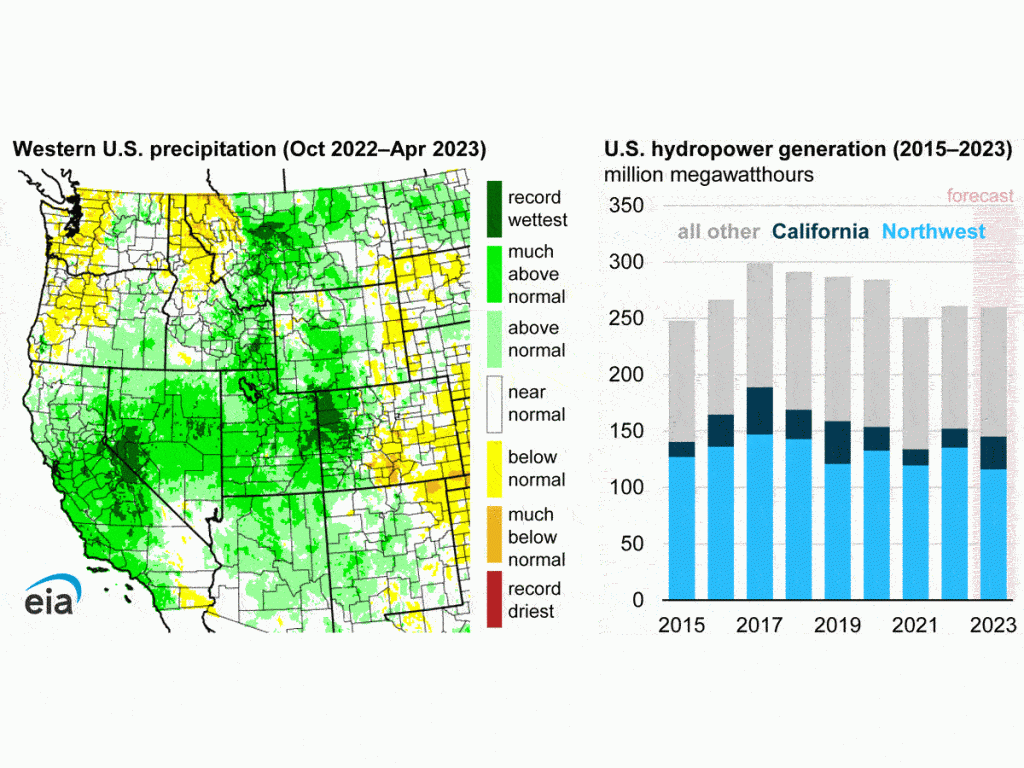
Record-breaking rain and snow in parts of the western United States contribute to our forecast 72% rise in hydropower generation in California this year compared with last year, according to our latest Short-Term Energy Outlook (STEO). However, below-normal precipitation and a mixed water supply outlook in the Pacific Northwest, which generates a significant portion of the country's hydropower, offset the forecast increase in hydropower generation in California.
The Pacific Northwest houses more than one-third of U.S. hydropower capacity and produces about half of the country’s total hydropower, on average. As a result, changes in hydroelectric supply in the Northwest can affect the region’s power markets, leading to changes in natural gas consumption and electricity trade with neighboring states.

Seasonal precipitation and snowpack accumulation are the two main factors that predict water supply. The 2023 water year (October 1, 2022–September 30, 2023) followed a warm, dry summer in the Pacific Northwest. Extreme heat waves across Washington, Oregon, and Idaho left the region with dry soils and low runoff. The precipitation seen this past fall and winter was mostly below normal, especially in Washington and northern Idaho.
However, some parts of the region have received significant precipitation. Atmospheric rivers that brought record levels of precipitation to California also arrived in southern Oregon and southern Idaho. This precipitation fell in the form of snow, even at lower elevations, because of colder-than-normal temperatures.
The NWRFC water supply forecast for The Dalles Dam is 93% of normal. The Dalles Dam is near the mouth of the Columbia River on the border between Washington and Oregon. Water supply conditions at The Dalles Dam reflect those of the upstream Columbia River system.
The NWRFC’s water supply outlook contributes to our May forecast in STEO of 14% less electricity generation in the Northwest from hydropower this calendar year compared with last year. We expect that U.S. hydropower plants will generate 260 million megawatt hours of electricity this year, or 6.4% of total electricity generation.








